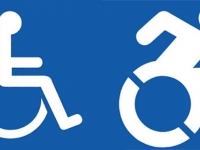Health
FRENCH SENATE BRINGS NEW FRESH BREATH TO DISABILITY POLICY IN THE PUBLIC SERVICE
REPORT CHAIRED BY SENATOR PHILIPPE BAS

French Senate (Source: Jedi Foster, RSR)
USPA NEWS -
The senators, Catherine Di Folco Republican and Didier Marie, deliver the outcome of the Senatorial report about disability policy in te public service under the presidency of senator Philippe Bas (Republican). Here are the key figures of the new fresh breath to disability in the public service, coming along with the Sente Report.
Key figures of the fact-finding mission
 The organization of work
- 8 months of work;
- 26 hearings, 2 trips to Lyon and Rouen and 104 stakeholders heard (associations, unions, government, integration actors, etc.);
- 28 concrete proposals to breathe new life into disability policy in the civil service.
 A risk of discrimination still present
- 19%: the unemployment rate of people with disabilities (almost twice the national average). By way of comparison, this rate is 9.6% in Sweden, 10% in Italy and 13% in Belgium.
- 80%: the percentage of disabilities known as "invisible" (mental disorders, autism, dyslexia, etc.).
 Disability in the public service
- 250,760: the number of workers with disabilities in the civil service;
- 5.61%: the employment rate of persons with disabilities in the civil service (for an employment obligation of 6%);
- 56%: the
Key figures of the fact-finding mission
 The organization of work
- 8 months of work;
- 26 hearings, 2 trips to Lyon and Rouen and 104 stakeholders heard (associations, unions, government, integration actors, etc.);
- 28 concrete proposals to breathe new life into disability policy in the civil service.
 A risk of discrimination still present
- 19%: the unemployment rate of people with disabilities (almost twice the national average). By way of comparison, this rate is 9.6% in Sweden, 10% in Italy and 13% in Belgium.
- 80%: the percentage of disabilities known as "invisible" (mental disorders, autism, dyslexia, etc.).
 Disability in the public service
- 250,760: the number of workers with disabilities in the civil service;
- 5.61%: the employment rate of persons with disabilities in the civil service (for an employment obligation of 6%);
- 56%: the
THE FRENCH LAW ON DISABILITY WAS VOTED ON 2005 FOR EQUL RIGHTS AND OPPORTUNITIES
The founding law of 11 February 2005 on equal rights and opportunities, participation and citizenship of people with disabilities has made it possible to move towards a more inclusive society.Republican crucible, the public service does not escape this requirement: the administrations of more than 20 agents who employ less than 6% of disabled workers must contribute to the financing of the Fund for the Integration of Disabled People in the Public Service (FIPHFP) .--------------------------------------------------------------------------------------------------------------------------------------------------------------------------
Fourteen years after its creation, FIPHFP has nothing to be ashamed of: the employment rate of disabled workers has risen from 3.74% to 5.61%.----------------------------------------------------------------------------------------------------------------------------
Disability policy, however, is at a turning point, forcing it to reinvent itself.On the one hand, significant disparities persist between the slopes of the civil service. Only the territorial side meets its obligations, with an employment rate of 6.76%, against 5.67% for the hospital and 4.65% for the state side. As Catherine Di Folco, rapporteur, points out, "currently, the actions implemented are not very structured. They are often based on the energy and personal commitment of some elected officials, managers or agents. They are put at risk when these locomotives leave their functions ".--------------------------------
On the other hand, the deterioration of the financial situation of FIPHFP represents a major risk, which leads to questions about its future. Between 2015 and 2018, the fund accumulated 230 million euros of deficit, for an annual budget of 149.5 million euros.--------------------------------------------------------------------------------------------------------------------------------------
Philippe Bas, chairman of the committee, said: "We can not accept such a reduction of assistance to disabled workers, which calls into question the spirit of the law of 11 February 2005. The time is not up to the statement but to the action. Far from stereotypes, people with disabilities are a source of wealth for our administration, which must represent our society in all its diversity. "In recent years, reports have followed one another to highlight the urgency of the situation (General Inspectorate of Finance, Court of Auditors, etc.).
The hour is no longer the report but the action.----------------------------------------------------------------------------------------------
After eight months of work, the fact-finding mission has formulated 28 concrete proposals to breathe new life into disability policy in the civil service. According to Didier Marie, rapporteur, "the urgency is to think about a new economic model to stabilize FIPHFP's resources at 150 million euros per year, or 20 million euros more than the Government's objective" .
These proposals are intended to be incorporated into the Public Service Transformation Bill, which is expected to be considered in the Committee on Laws on Wednesday, June 12, 2019.
THE THREE KEY POINTS OF THE FACT-FINDING MISSION
1 / Progress has been real but still insufficient for the inclusion of persons with disabilities in the public service
2 / The FIPHFP is in danger and must reinvent itself
3 / A new impetus must be given to disability policy in the public service
1 / Real progress but still insufficient
 Progress made
The introduction of the Employment Obligations of Disabled Workers (OETH) in the public service has a positive record.
Between 2006 and 2018, the legal employment rate of persons with disabilities increased from 3.74% to 5.61%.
Legal employment rate of persons with disabilities in the public service
(in% of the total workforce)
Source: FIPHFP
Every year, public employers recruit more than 30,000 disabled workers, twice as many as in 2009.
Major disparities between the slopes of the public service
The increase in the employment rate of disabled workers masks significant disparities between the three sides of the public service.
Today, only the territorial civil service meets its obligations, with a legal employment rate of 6.76%, against 5.67% for the hospital public service and 4.65% for the public service of the State.
EVOLUTION OF THE LEEGAL EMPLOYEMENT RATE IN THE THREE SLOPES OF THE PUBLIC SERVICE----------
The state civil service is the one that is lagging behind: each year, the State pays nearly 38 million euros to the FIPHFP.
Actions also vary from one department to another, with each department concluding its own agreement with FIPHFP without any coordination effort. While some ministries are virtuous, such as those of the Armies and the ecological and solidarity transition, others have only a limited commitment. Thus, the employment rates of the Ministry of National Education (3.62%) and the services of the Prime Minister (3.38%) are particularly low, even though national education does not contribute to the financing of FIPHFP . In addition, the management of disability policy in the state civil service remains too centralized.
When they seek help from FIPHFP, the prefectures must transmit their requests to the central level, the agreements being concluded between FIPHFP and the ministries. The "round trips" are therefore incessant between the prefecture, ministries and FIPHFP. Too complex, they do not respond effectively to the needs of disabled workers.
THE MAIN DIFFICULTIES ENCOUNTERED--------------------------------------------------------------------------------------------
Pathways poorly adapted to disability. Even developed, administrative competitions are not very accessible for candidates with disabilities. The "third time" is a difficulty for "tired" people, who are running out faster than average. When a candidate at the National School of Administration (ENA) receives a third time, his admission tests last a total of 30 hours and 40 minutes, spread over five days.
1 The acronym "BOE" corresponding to persons with the employment obligation of disabled workers.
Similarly, apprenticeship leads to a stalemate: at the end of their contract, disabled workers must obtain administrative assistance to be established in their position.--------------------------------------------------------------------------------------------------
In practice, subsidized contracts are the main route of access for people with disabilities to the public service. In 2017, of the 17,393 disabled workers that Cap emploi "placed" in the public sector, more than half (8,707) were recruited under a subsidized contract. The reduction of state-financed subsidized contracts, however, weakens this access route. In the example of Cap emploi du Rhône, the number of placements in subsidized contracts in the public sector fell by 44.86% between 2017 and 2018.
A LACK OF COORDINATION BETWEEN THE ACTORS OF INSERTION
There is a big lack of coordination between the actors of insertion
Many positions open to disabled people are not filled because of lack of candidates. For example, the Bas-Rhin management center was unable to fulfill its objective of recruiting 99 disabled workers between 2016 and 2018: given the number of candidates identified, Cap emploi was able to fill only 76 positions .
In practice, the action of integration actors (departmental houses of disabled people, employment center and employment cap) is not sufficiently coordinated, to the detriment of job seekers with disabilities. Similarly, Pôle emploi and Cap emploi advisers are not familiar with the specificities of the civil service.
Prevention policies that can be improved
Occupational health is one of the key issues in the public service.
This problem concerns disabled workers but also agents whose health deteriorates during the career because of a health problem, an accident of life or an occupational disease.
In practice, the action of integration actors (departmental houses of disabled people, employment center and employment cap) is not sufficiently coordinated, to the detriment of job seekers with disabilities. Similarly, Pôle emploi and Cap emploi advisers are not familiar with the specificities of the civil service.
Prevention policies that can be improved
Occupational health is one of the key issues in the public service.------------------------------------------------------------------------
This problem concerns disabled workers but also agents whose health deteriorates during the career because of a health problem, an accident of life or an occupational disease. In practice, the action of integration actors (departmental houses of disabled people, employment center and employment cap) is not sufficiently coordinated, to the detriment of job seekers with disabilities. Similarly, Pôle emploi and Cap emploi advisers are not familiar with the specificities of the civil service. The Prevention policies that can be improved. Occupational health is one of the key issues in the public service. This problem concerns disabled workers but also agents whose health deteriorates during the career because of a health problem, an accident of life or an occupational disease. Source French Senate
Ofrench Senate Philippe Bas Disability Report Public Service Senator Catherine Di Folco Didier Marie Republicans Jedi Foster Rahma Sophia Rachdi
Liability for this article lies with the author, who also holds the copyright. Editorial content from USPA may be quoted on other websites as long as the quote comprises no more than 5% of the entire text, is marked as such and the source is named (via hyperlink).









